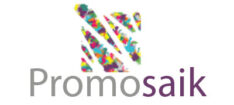Posted on March 18, 2019 by Pragmatic Mom
The 2019 5th Annual ReFoReMo (Reading for Research Month) Online Picture Book Challenge is coming up in March. ReFoReMo supports picture book writers, educators, and students who enjoy learning about stellar writing from mentor texts.
I’m participating this year with five books 5 current book titles that have opened my eyes to one aspect of the picture book craft and provide outstanding models for writers and illustrators. Because these 5 books are not strictly picture books, I have another list on the ReFoReMo site: ReFoReMo Day 8: Author/Diversity Advocate Mia Wenjen Highlights Biography Arcs). Consider this list my dry run!
My mentor books are based on the advanced alphabet picture book that I am writing, A is for Asian American and Pacific Islander. It came about because my daughter was in the illustration major Rhode Island School of Design Pre-College. Because she was commuting from Boston to Providence and getting very little sleep, I wanted to help her when she said that her final was to write and illustrate an alphabet book.
It turns out that she did NOT want any help in coming up with alphabet book and considered it cheating. She ended up doing her book on activists. I had grappled with my list for weeks, trying to encompass all the Asian American and Pacific Islander immigrant groups because my first list was dominated by Chinese, Japanese, and Korean Americans.
My hurdles in writing an alphabet picture book manuscript were:
- How much story do you tell per individual? Should I write a one page essay, a one paragraph highlight, or a single sentence?
- What is the best way to present the information? Side bars? Side notes?
- Should the alphabet aspect of the book be emphasized or not (or even abandoned)?
- Is there a market for advanced alphabet books?
- Should the book be organized by gender or profession versus race?
I chose books published within the last three years to help writers, readers, and educators grasp the more recent market.
This is what I gleaned from my five books:
These five books showed me how to tell a story of disconnected parts. While the words are important, the layout and design are crucial to structure the story visually. The length of the text and the size of the font determines the true audience. Keeping the narratives short and punchy is more important than getting all the details of their life.
Grand Canyon by Jason Chin
Jason Chin uses sidebar illustrations with text to convey more complicated science concepts. The text of the book has facts but is meant to draw in the reader. The book follows the path of a father and daughter hiking and that helps to bring the narrative together as it anchors the story and also personalizes it. There are also a lot of visual surprises in the book to keep it interesting. He combines earth science with ecosystems, plant and animal life, and ecology seamlessly. There is a lot of science presented in an engaging way. [nonfiction picture book, ages 7 and up]

A-Z of Wonder Women by Yvonne Lin
I really like the small size of the book. Lin combines a very brief, alliterative description of each woman with a short paragraph and a quote. It’s very concise which allows each page enough blank space to breathe. I wouldn’t have guessed that this much information would fit on such a small page, but the font is pretty small, perhaps too small? The publisher says the book is for ages 4 and up but the font and story feel like it’s for older kids. I really like the quotes but I don’t think it fits a preschool school age reader. Sometimes the alliteration titles feel forced. [advanced picture book, ages 6 and up]

Rad American Women A-Z by Kate Schatz, illustrated by Miriam Klein Stahl
This is the first book that I read with female-focused advanced picture book and it totally blew my mind. The cover is so strong and eye-catching. There is a full page of text on each woman with a summary lead-in paragraph. The font is medium sized but the margin space feels tight. The black and white portrait illustrations are especially appealing. The title is also great. [advanced picture book, ages 8 and up]

Women in Sports: 50 Fearless Athletes Who Played to Win by Rachel Ignotofsky
This series is really my jam. I really like how Ignotofsky incorporated cartoon images to convey the story. She uses a limited color palette which reduces the cost of printing but also keeps the book visually interesting. Each person’s narrative is a lengthy single page in a small font. It works for an older audience. Her books are themed by professional and tied together by her distinctive and attractive illustrations. [nonfiction biography anthology, ages 9 and up]

A is for Astronaut: Blasting Through the Alphabet by Astronaut Clayton Anderson, illustrated by Scott Brundage
I include this book because it has the same elements that my manuscript has: alphabet format, short paragraph that can be read as the stand-alone story, with a longer sidebar. I don’t like the layout and design of the book. It’s too busy. The two text blocks don’t really look good visually. The size of the book is much larger than the other examples so perhaps the illustrations are the issue by being too large. [advanced alphabet picture book, ages 6 and up]

More ReFoReMo (Reading for Research Month here:


